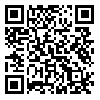Volume 30, Issue 2 (6-2024)
Back to this Issue |
Back to browse issues page
Download citation:
BibTeX | RIS | EndNote | Medlars | ProCite | Reference Manager | RefWorks
Send citation to:



BibTeX | RIS | EndNote | Medlars | ProCite | Reference Manager | RefWorks
Send citation to:
Akhoundzadeh K, Shafia S, Abedini Z, Khoramirad A. Effect of ECG drawing assignments on nursing students' learning and perspectives at Qom University of Medical Sciences. Journal of Hayat 2024; 30 (2) :177-186
URL: http://hayat.tums.ac.ir/article-1-5252-en.html
URL: http://hayat.tums.ac.ir/article-1-5252-en.html
1- Dept. of Physiology, School of Medicine, Qom University of Medical Sciences, Qom, Iran
2- Dept. of Physiology, School of Medicine, Mazandaran University of Medical Sciences, Sari, Iran
3- Dept. of Pediatric Nursing, School of Nursing and Midwifery, Qom University of Medical Sciences, Qom, Iran
4- Dept. of Community Health Nursing, School of Nursing and Midwifery, Qom University of Medical Sciences, Qom, Iran ,parsian_Ins_kh@yahoo.com
2- Dept. of Physiology, School of Medicine, Mazandaran University of Medical Sciences, Sari, Iran
3- Dept. of Pediatric Nursing, School of Nursing and Midwifery, Qom University of Medical Sciences, Qom, Iran
4- Dept. of Community Health Nursing, School of Nursing and Midwifery, Qom University of Medical Sciences, Qom, Iran ,
Abstract: (339 Views)
Background & Aim: Electrocardiography (ECG) is the most widely utilized diagnostic tool in medicine. However, nursing students often have problems with interpreting ECGs, highlighting the need for revised training methods. This study aimed to assess the effect of ECG drawing assignments on nursing students' learning and their perspectives on this teaching method in the context of a critical care nursing course.
Methods & Materials: This quasi-experimental study involved 52 fifth-semester BSc nursing students enrolled in the fall and spring terms at Qom University of Medical Sciences. For the fall group, traditional lectures and Q&A sessions were conducted during the first half of the semester, followed by an assignment requiring students to draw common ECGs in the second half. In contrast, for the spring group, students drew ECGs during the first half of the semester. Learning outcomes were assessed through a written test, while students’ perspectives on the drawing assignments were evaluated using a questionnaire. Data were analyzed using SPSS software version 22, employing Mann-Whitney and Wilcoxon tests to compare groups.
Results: The mean score from the perspective questionnaire regarding ECG drawing was 14.86±3.34 (maximum score of 18). In most cases, students had positive or relatively positive views towards this teaching method. A significant difference was observed between the course exam scores of students when they engaged in drawing ECGs compared to when they did not (P<0.001).
Conclusion: Drawing ECGs can be helpful in enhancing learning outcomes in the critical care nursing course and may increase students’ motivation to learn.
Methods & Materials: This quasi-experimental study involved 52 fifth-semester BSc nursing students enrolled in the fall and spring terms at Qom University of Medical Sciences. For the fall group, traditional lectures and Q&A sessions were conducted during the first half of the semester, followed by an assignment requiring students to draw common ECGs in the second half. In contrast, for the spring group, students drew ECGs during the first half of the semester. Learning outcomes were assessed through a written test, while students’ perspectives on the drawing assignments were evaluated using a questionnaire. Data were analyzed using SPSS software version 22, employing Mann-Whitney and Wilcoxon tests to compare groups.
Results: The mean score from the perspective questionnaire regarding ECG drawing was 14.86±3.34 (maximum score of 18). In most cases, students had positive or relatively positive views towards this teaching method. A significant difference was observed between the course exam scores of students when they engaged in drawing ECGs compared to when they did not (P<0.001).
Conclusion: Drawing ECGs can be helpful in enhancing learning outcomes in the critical care nursing course and may increase students’ motivation to learn.
Send email to the article author
| Rights and permissions | |
 |
This work is licensed under a Creative Commons Attribution-NonCommercial 4.0 International License. |






